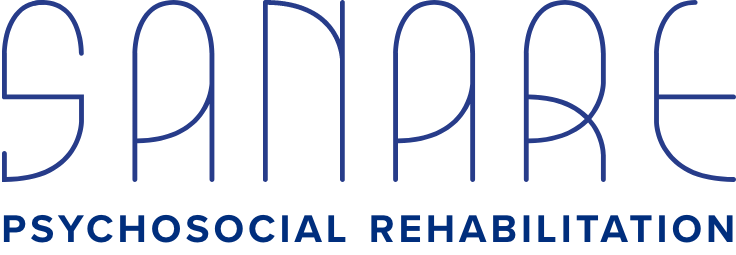Behavioral Activation
What is Behavioral Activation?
Behavioral Activation is a therapeutic approach used to treat depression by helping individuals identify and engage in activities that are rewarding or meaningful to them. The core idea behind Behavioral Activation is that depression, and other mental health conditions, often lead to a cycle of withdrawal and avoidance, which can worsen mood and increase feelings of helplessness. By encouraging individuals to re-engage with their environment and participate in positive activities, Behavioral Activation aims to break this cycle. It focuses on increasing behaviors that are aligned with the person’s values and interests, thereby improving mood and fostering a sense of accomplishment and connection. This approach is rooted in cognitive-behavioral therapy (CBT) and is especially effective for those who experience low energy, lack of motivation, or difficulties in managing daily tasks.
What can Behavioral Activation be used to treat?
Behavioral Activation is primarily used to treat depression, but it has also been shown to be effective for other mental health conditions. These include:
Depression: BA is widely used to treat major depressive disorder by targeting the avoidance behaviors and inactivity that often accompany the condition.
Anxiety disorders: It can help individuals with anxiety by encouraging them to confront feared situations and gradually engage in activities they might be avoiding due to anxiety, which helps reduce overall distress.
Chronic stress: By promoting engagement in rewarding and meaningful activities, BA can help individuals with chronic stress cope better and improve their emotional well-being.
Post-traumatic stress disorder (PTSD): In PTSD, BA can be used to reduce avoidance behaviors, which often prevent people from confronting trauma-related memories or situations in a healthy way.
Bipolar disorder: In the context of bipolar disorder, BA can help manage depressive episodes by encouraging routine-building and activity scheduling, which can be beneficial during mood fluctuations.
Substance use disorders: BA has been used in substance use treatment programs to address avoidance behaviors and to promote healthier, more adaptive behaviors to replace substance use.
Overall, Behavioral Activation is a versatile and adaptable treatment that can help with various mental health conditions, especially those that involve patterns of avoidance, inactivity, or low engagement in rewarding life experiences.
What is the research behind Behavioral Activation?
Research on the efficacy of Behavioral Activation has shown it to be an effective treatment for depression, with numerous studies supporting its use across diverse populations. Meta-analyses have found that Behavioral Activation can lead to significant reductions in depressive symptoms, often showing comparable or superior results to traditional cognitive-behavioral therapy (CBT) and other therapeutic approaches.
Studies have demonstrated that Behavioral Activation helps break the cycle of inactivity and avoidance that perpetuates depression, with individuals reporting improvements in mood, energy levels, and overall functioning.
Research also suggests that Behavioral Activation is effective across a variety of settings, including individual therapy, group therapy, and even self-guided interventions. The approach is particularly beneficial for those with more severe depression or individuals who may struggle with the cognitive aspects of CBT. Overall, the evidence points to Behavioral Activation as a powerful, straightforward, and accessible treatment that can provide lasting benefits for people dealing with depression.
Behavioral Activation at Sanare Psychosocial Rehabilitation
Here are some of the benefits of integrating Behavioral Activation into the real world as we do at Sanare Psychosocial Rehabilitation:
Simplicity and Accessibility: Behavioral Activation is relatively straightforward and easy for clients to understand and implement. Its focus on behavior change through concrete, manageable steps makes it accessible for individuals from various backgrounds, even those with limited experience in therapy.
Practical and Action-Oriented: Behavioral Activation encourages clients to take active steps toward engaging in meaningful activities, which can lead to immediate improvements in mood and functioning. This practical approach can be especially helpful for clients who feel stuck or overwhelmed by their emotions, as it focuses on doing rather than just talking about feelings.
Quick Results: Many clients experience improvements in mood and energy levels relatively quickly, often within just a few sessions. This can be motivating for clients, giving them a sense of progress and reinforcing their commitment to therapy.
Versatility: Behavioral Activation can be adapted for a wide range of conditions, from depression to anxiety, PTSD, and even substance use disorders. It can be used in various therapy settings, including individual, group, and even self-guided formats, making it highly versatile.
Reduces Avoidance and Isolation: Many mental health conditions involve avoidance behaviors (such as staying home, avoiding social situations, or neglecting self-care), which can worsen symptoms. Behavioral Activation helps clients confront and gradually reduce avoidance, which can improve social connections, increase life satisfaction, and enhance a sense of control over their lives.
Fosters Long-Term Change: By focusing on sustainable behavior change and promoting the development of healthy routines, Behavioral Activation helps clients build a foundation for long-term mental well-being. The skills learned through Behavioral Activation can be applied beyond the treatment relationship, making it easier for clients to manage challenges in the future.
Improves Motivation: Clients who feel a lack of motivation due their mental health concerns often find Behavioral Activation’s emphasis on setting achievable goals and engaging in rewarding activities particularly motivating. As clients experience success in small steps, their confidence and drive to make further changes often grow.
Collaboration and Empowerment: Behavioral Activation involves a collaborative relationship between the therapist and the client, where the client is an active participant in identifying activities to engage in. This sense of empowerment can increase a client’s investment in their treatment and overall sense of agency.
Overall, Behavioral Activation provides a flexible, client-centered approach that promotes meaningful changes in behavior, enhancing mental health and improving quality of life in the real world.

